Are you looking for a suitable display for PC gaming? Then you’ve come to the right place. The monitor is a crucial, yet often neglected element of the PC experience. This indispensable device gets overlooked the most!
[toc] The monitor is one of the most expensive pieces of a PC setup. Therefore, it is important to choose well by factoring it into your budget and your application. It also depreciates more slowly than the rest of the PC’s components. As technology evolves, the size, quality, and performance of monitors will improve continually, although not at the same pace as the other components. We estimate the lifespan of a monitor to be at least 4 or 5 years before it needs to be replaced. That’s why you shouldn’t hesitate to spend a few more dollars for a good monitor over a high-end processor or video card, which will need to be replaced in 18 months to enjoy the latest games.In this article, the ULITE team has compiled a list of LC-displays that we can highly recommend. From gamer-displays with 120/144 Hz, curved Ultrawide-displays, or high-resolution Ultra-HD-panels (“4K”), we found just the right ones in every price category.
Best Gaming Monitors Comparison – July 2021| Handpicked by ULITE.ORG
[table “3” not found /]* The specs of each monitor listed above is only basic ones, you can see more detailed information of each monitor on Amazon
The Recommendations by Resolution
For years, display size was the main factor when gamers chose a display to buy. Today, this has changed a lot: The sheer range of available products has exploded – it has become almost impossible for a single person to have an overview of the entire market. That’s why we decided to revise our LCD buyer’s guide. Instead of size, we now sorted our recommendations by resolution. response time, features, size, and prize-tag are of course still important factors.
Gaming-Display 2017: Buyer’s Guide for LCD Full-HD-Displays (1920×1080)
Many gamers are still using displays with 1920×1080 (Full HD) resolution which equates to a total pixel number of just over 2,0 MP. Typically, these displays have a screen diagonal of 24”. While there are also 27” models around, by now, these are mostly being replaced with higher resolution models. Fast-Response displays with extremely low latencies and high refresh rates of 120 or 144 Hz are most commonly found in this category. Those features, in fact, are some of the main reasons people are still sticking with Full-HD panels. Even 60 Hz displays still have their place as budget gaming-displays. The hardware in many gaming rigs only rarely puts out more than 60 FPS anyway. These monitors are also great for more casual gaming. Samsung C24FG70FQ:
Samsung C24FG70: Comeback in the Gaming Sector
Samsung is trying to get its ball back into the game of gaming LCDs with this 24” panel while also staying on its own very bold path. What that means, is that the display is curved significantly at a radius of 1,800mm. This only really unleashes its full effect in multi-screen setups, though. The rest of the specs are also top notch: 144 Hz, Freesync, full sRGB color gamut thanks to Quantum-Dot technology and a high static contrast ratio of 2.000:1. What’s unusual for a VA panel, is that the response times are also said to be very fast. In fact, Samsung advertises with 1 ms. This however has been achieved through a “Motion Picture Response Time” measurement, and not using the conventional Gray-to-Gray method. The C24FG70FQ, alongside its bigger brother C27FG70, is one of the best gaming monitors in its class. This is not only thanks to its great image quality, but also because it’s very user friendly: A base with double-joint as well as an in depth OSD menu allowing you to tweak a lot of things are always a plus. At around 280$, the C24FG70FQ is a relatively expensive, yet feature-packed 24” Full-HD display.
Read More information and reviews on Amazon
ASUS MG248Q
A cheaper Full-HD alternative is the ASUS MG248Q (More information on Amazon). that has a low latency of only 3ms at 144 Hz, and Overdrive that can be adjusted in 5 increments. It also comes with Freesync (from 40 to 144 Hz), Nvidia 3D-Vision and the “Displaywidget” software that allows you to link your display settings to specific software and even export them as XML files. These features a probably the reason why ASUS went with a price-tag of almost 300$. Nvidia users probably tend to go fort the G-Sync enabled, 180 Hz capable PG248Q which comes in around 540$ (More information on Amazon). Those who don’t need G-Sync or other software goodies can find great alternatives in the BenQ ZOWIE RL2455 and Acer XF240H that cost 200 and 280 dollars each.
AOC G2460PF: The Affordable Way to get 144 Hz and Adaptive Sync
The AOC G2460PF (More information on Amazon) is our mid-level recommendation and is the cheapest way of getting 144 Hz and Freesync in one package. The I/O is also contemporary with a USB hub on the side. Ergonomics-wise we’re getting pivoting-ability and a removable cable management clip on the foot. The Freesync range from 35 up to 144 Hz is impressive. Contrast however, didn’t manage to impress us. The G2460PF also tends to be too bright. Even when set to the lowest brightness, it still clocked in at 156 cd/m². Luckily, all relevant parameters can be adjusted in the settings menu. AOC’s G-Sync enabled G2460PG (More information on Amazon) commands a serious premium just for Nvidia’s proprietary Dynamic-Refresh-Technology.
Benq Zowie RL2455: Gamer Display for Those on a Budget
Of course, nowadays you can find capable gaming displays for less than 200$ by now. One of those is the new Benq Zowie RL2455. Benq are marketing this model mainly as an RTS or console display with the former probably being due to two special display modes intended to make details onscreen more pronounced. Despite this, the RL2455 is great for every use. At its low price-tag, it omits some upper and middle-class features and opts for a 60 Hz refresh rate. This paired with the flat panel and limited ergonomics are the reason for the low price. Free- and G-Sync are also not supported. With low latency and a very fast TN-panel, this display still checks the necessary boxes for a gaming monitor.
Read More information and reviews on Amazon
High-Fps-Gaming: 240-Hz-Displays Hit the Market
Those of you playing shooters at a competitive level need every millisecond they can get, even if that means sacrificing image quality. In this niche, TN-panels still have their place. Since late 2016, these are available with refresh rates of up to 240 Hz. This makes high-FPS gaming possible without any sync issues, and without needing to utilize Vsync, G-Sync, or Freesync, which all increase input-lag.
In late 2016, the first 240 Hz panel hit the market: The Benq Zowie XL2540. For a model so clearly focused on E-Sports, a fast TN-panel with the highest possible refresh-rate is the way to go. The Zowie not only comes with a fast panel but also offers some useful gimmicks like a carrying handle on the base, the focus-blinds, a protective cover, and a cable remote. Still, the price of around 500$ remains a tough pill to swallow for a 24” Full-HD display without G-Sync or Freesync. This display is really only for those who want to play fast paced shooters like Counter Strike: Global Offensive in the best way possible.
Read More information and reviews on Amazon
Gaming-Displays: LCD Buyer’s Guide for WQHD Displays (2.560×1.400)
If full HD doesn’t satisfy your need for pixels but your graphics card can’t quite handle UHD resolutions, screens with a resolution of 2.560×1.400 pixels are an ideal choice. Compared to Full HD, you’re getting 78% more pixels. From a 24” Full HD panel to a 27” WQHD panel the pixel density increases from 92 of around 109 pixels per inch – a difference that is definitely noticeable, even when increasing the diagonal at the same time. This increase in pixels however, does mean more load on the GPU. While 1080p can nowadays be handled even by entry-level graphics cards, WQHD needs a significantly more powerful GPU to push all those pixels. This is also due to Anti-Aliasing still being necessary at this resolution, and it being a very hardware-intensive process. You can find a roundup of current WQHD displays in our 04/2017 issue.
Eizo Foris FS2735: Adjustable Freesync and Config App
At the top of our WQHD buyer’s guide, the Eizo Foris FS2735 has found its place. It’s a serious all-rounder that already impressed us in our hands-on test. With adjustable Freesync (either 35-89 Hz or 56-144 Hz), extremely low latency, an IPS panel, and a slew of extras like its own configuration app, and even a mobile app, this monitor brings with it everything gamers could want… If you have an AMD graphics card. Otherwise, dynamic refresh rates won’t work. We also like the variety of ports and the internal power supply with a dedicated power switch. The FS2735 is also great for work due to its perfect ergonomics and great color reproduction. With its high price-tag however, this display is aimed at those more flush with cash. Luckily, you can get high-quality WQHD displays for less than that.
Read More information and reviews on Amazon
Viewsonic XG2703-GS: IPS-Panel with G-Sync up to 165 Hz
For those looking for a luxury monitor but wanting to stay below 700$ the Viewsonic XG2703 is a great choice. With its variable G-Sync that goes from 30 Hz up to 165 Hz, and a 27” IPS panel, this display doesn’t make any compromise when it comes to image quality. In our test in the 04/2017 issue, we measured a good contrast ratio of 1118:1, low input lag of 12,1ms, as well as even illumination and great color accuracy. A screen of this quality is of course no bargain and you’ll have to dish out 700$ for this one.
Read More information and reviews on Amazon
Benq Zowie XL2735
Benq are taking a different path with their new Zowie XL2735 which is aimed at professional and competitive gamers, and, of course, also the rest of the gaming community. Adaptive Sync has been omitted in favor of minimal lag and high refresh rates up to 144 Hz made possible by Benq’s “Dynamic-Accuracy” technology. We think this might have been realized through a combination of backlight-strobing and typical overdrive. This technology is compatible to variable refresh rates, making Freesync or G-Sync unnecessary. Two adjustable and removable blinds can block out distractions or reflections, and the cable-bound remote with integrated preset-memory allows to create and transport individual screen profiles. All in all, this is a proper E-Sports display we can highly recommend to those loving fast-paced online shooters – despite the high price.
Read More information and reviews on Amazon
Dell S2716DG: Fast, Elegant, and with G-Sync
In recent months, many WQHD gaming displays got fitted with the complete package of an expensive IPS panel, Adaptive Sync, and refresh rates of 144 Hz or more. Dell however, picked a more humble approach for their G-Sync debut with the S2716DG. They went for a TN panel and sacrificed some image quality. While even this model isn’t exactly a bargain, it offers excellent synchronization with Nvidia’s G-Sync alongside low latency and great build quality, The simplistic and elegant body is an unexpected deviation from the usual gaming-display-formula. In our test, we also really enjoyed excellent even illumination, and low latency. Due to its limited color accuracy and an obvious need for recalibration, photographers should definitely look another way – the S2716DG is aimed explicitly at gamers who value fast response times over image quality.
Read More information and reviews on Amazon
Dell Ultrasharp U2515HX: Small but High-Res
Dell’s Ultrasharp U2515H has been on the market since December 2014 and got a update on October 2016 named U2515HX , and is still one of the cheapest and most popular WQHD displays on the market. The focus when developing this display seems to have been put mostly on image quality. It features an AH-IPS panel with a diagonal of 25”. The resolution is 2.560×1.440 pixels, making for a pixel-density of 117 pixels per inch which is pleasant to work and game with. The maximum brightness lies at 350 cd/m2 which is good enough for bright environments. The latency isn’t the greatest at 6ms, but is definitely acceptable – just not the best for fast-paced shooters. Action games like GTA V or racing games like Project Cars are a lot of fun on the Dell. On the back, you’ll find exclusively digital ports: 2x HDMI (MHL), DisplayPort 1.2, and another Mini-DisplayPort. What’s special is that this display also offers a DisplayPort output which will probably only come in handy for a few users. WQHD displays are also available for less than 300$ – however, this often means you’ll get a smaller panel overall.
Read More information and reviews on Amazon
Gaming-Displays: LCD Buyer’s Guide for UHD-Displays
Good and gaming-ready UHD displays with decent image quality can nowadays be found for less than 350$. Here, we’ll introduce some of them to you. If you’re looking for a bigger high-resolution display, it’s well worth it to also look at some offerings on the business and TV market like the Philips BDM4065UC. In a recent instalment of “UHD meets 40 inches”, we looked at the Liyama X4071UHSU-B1. LCDs of this size however, require you to have an overwhelming amount of free space on your desk. A market overview of new UHD displays can be found in our 11/2016 issue.
Asus PG27AQ: UHD-IPS-Panel for Nvidia Users
UHD/4K gaming is still a double-edged sword. While it has been a buzzword in marketing for quite a while, even high-end graphics cards can’t cope with the challenges running a graphics-intensive game in 4K poses… Except if there’s a multi-GPU setup or a GeFore GTX Titan inside your rig, you lower your graphics settings, or you can live with frequent drops in framerate. With Nvidias new GTX 1080, pushing those 8.3 Megapixels is starting to work better. UHD is thus becoming less and less of an exotic resolution.
That means that displays like the Asus PG27AQ are getting more and more popular despite their high price tag. In our 02/2016 issue, we tested the PG27AQ in its own hands-on review, and in our Freesync/G-Sync long-term test. What we found is that it stretches the boundaries of what’s currently possible. Like with pretty much all other UHD panels the maximum refresh rate at 3.840×2.160 pixels is 60 Hz. More will only become possible with DisplayPort 1.3. However, the first display with that port can be expected to come out at the end of this year. Under current circumstances, G-Sync in the PG27AQ is limited to a maximum of 60Hz (60 FPS). Like its smaller brother, the QHD PG279Q (More information on Amazon), this display has great color accuracy, great viewing angles, up to 165Hz refresh rate and good ergonomics. The pixel-density is excellent at 163 PPI. Where it’s slightly behind is in the latency department. Asus are recommending an Nvidia GTX 980 as a minimum – makes sense seeing how many pixels it will have to push.
Read More information and reviews on Amazon
Samsung U28E850R: UHD in the Midfield
With UHD displays, you can now get Dynamic Refresh for a lot less money. One good example for this is Samsung’s U28E850R with Freesync support – albeit only from 40 to 60 Hz. Here, you’re getting 4K resolution at 28” which means that the pixel density is still going to be very high. Instead of IPS, this display has a cheaper TN-panel which results in achieving a less stellar off-axis viewing experience. You’ll notice a decrease in contrast and some color distortion when looking at the display from an angle. Despite slight variations in the backlight-brightness and its contrast ratio of 700:1, the U28E850R fared well in our test. It’s readily available and comes in at a fair 500$. Thus, it remains our tip for UHD panels in the mid-price segment.
Read More information and reviews on Amazon
Samsung U24E590D: 24” UHD Bargain
The price-drop of UHD displays throughout the last two years has been enormous. Nowadays, UHD displays often change hands for less than 400€. The Samsung U24E590D offers a resolution of 3.840×2.160 pixels with a diagonal of 24”. While its ergonomics are somewhat limited, it features an IPS panel and Freesync. The latter only works in the range from 45 and 60 Hz though. In our 08/2015 review, this display impressed us with good viewing angles, good color accuracy, and low input-lag. This is a great entry into the world of UHD, especially when seeing how its bigger sibling is quite a bit more expensive and “only” uses a TN-panel.
Read More information and reviews on Amazon
Gaming-Displays: Buyer’s Guide for 21:9 and Curved Displays
While the 16:9 aspect ratio is still dominating the display market, 21:9 models are become more and more sought after. These extremely wide displays give you a panoramic view during gaming and drastically enlarge the peripheral field of vision – especially with curved models. In most displays, you’ll find a resolution of 2.560×1.080 (UW-UXGA) which only demands a little bit more horsepower than traditional Full-HD. It can however, look somewhat grainy on 34” or 35” displays. More expensive 21:9 displays offer up to 1440p or 1690p. Ultra-wide displays, much like curved ones, aren’t for everyone, and aren’t supported by every game. In some titles, you will have to deal with black bars to the left and right of your content.
LG 38UC99-W: #1 in Size, Resolution, and also Price
Smaller is bigger: The diagonal of this display measures 38”and it boasts a resolution of 3.840×1.660 pixels. Beside its size, this theatre-worthy display also impresses with image quality. The IPS panel has great color accuracy and very even backlighting with differences of only 3% at most. The contrast ratio of 983:1 and its maximum brightness of 300cd/m2 are also good results. This makes it well suited for photo editing or videographers. The refresh rate goes up to 75 Hz and Freesync is also on board. All these perks make the biggest ultra-wide monitor a great all-rounder. Those more focused on gaming however, should look towards the LG 34UC79G-B (More information on Amazon) with its 144 Hz panel. This also only costs more than half of the 1.400$ that the LG 38UC99-W commands.
Read More information and reviews on Bhphotovideo
Asus PG348Q
Asus PG348Q (More information on Amazon) is another top-tier ultra-wide display. It unifies the most important features of a 21:9 gaming diplays: 34” in diagonal, G-Sync, a maximum refresh rate of 100 Hz, an IPS panel, and it’s curved. Although, with a radius of 3.800 mm, it’s a very subtle curve. Where they’ve gone more eccentric, is the foot which looks unconventional even by ROG standards. It however gives the display an edge over other ultra-wides in ergonomics. Its price however, is quite a statement, and despite its great performance metrics, can be called expensive. With Acer’s Predatox X34 (More information on Amazon), we also tested a very similar contestant in the 21:9 curved display rink. It also supports refresh rates of up to 100 Hz and comes with Nvidia’s G-Sync technology. An updated model with identical specs can be found in the X34A. The maladies of its predecessor (no guaranteed 100Hz and banding caused by the backlight) are said to have been cured. The X34A also commands a pretty hefty 1.100$.
Freesync users of course won’t have to life without dynamic refresh rates in the 21:9 realm. LG have revamped their top 21:9 model with the new 34UC98-W (More informaiton on Amazon). It boasts better ergonomics and height adjustment, a more stable body, a much more pronounced curve with a 1.800 mm radius, a UWQHD IPS-panel that conforms to sRGB almost across the entire surface, Freesync support, and Thunderbolt ports. Like with the Eizo Foris FS2735 or the Asus MG248Q, this display can be configured using a dedicated app. This isn’t entirely necessary with this model though, since all the parameters can also comfortably adjusted using the joystick placed on the side of the body. One much welcome extra has been omitted however: The refresh rate tops out at 60 Hz. With Freesync activated, the range goes from 50-75 Hz.
Cheaper ultra-wide alternatives can be found in the LG 29UB67-B (More informaiton on Amazon) and the 34UM68-P (More informaiton on Amazon). Both models have a 21:9 aspect ration at 2.560x 1.080 pixels but aren’t curved. Remember that curving a panel makes production more expensive and can lead to inconsistencies in the backlight. While a big panel like the one on the 34UM68-P is usually a plus, the resolution of the panels comes across as rather grainy paired with the sheer size of the displays. A plus however, is the great off-axis viewing experience due to the IPS panels used in both models, Subjectively, the LG 34UM68-P is capable of gaming: While the total latency lies at around 22ms, Freesync makes the display feel a lot more responsive than it is. A way of entering the 21:9 world on a budget is with the LG29UB67-B which is less impressive in size, omits Adaptive Sync, but also only costs 300$.
Before buying a gaming monitor, you should know:
- TN, IPS, or VA Panels – What’s Going to Be Your Pick for Gaming
- Response Time Vs. Input Lag, how important is it?
- Refresh Rate: Does it Matter?
- Should you invest in a 144 Hz monitor?
- NVIDIA G-Sync vs AMD FreeSync, what‘s the difference?
- Is a 4K Monitor Worth It?
Gaming Monitor Buying Guide
The right display panel technology for you
LCD and LED displays have both replaced cathode ray tube monitors. However, there is a difference between these two types of displays. LED refers to a particular type of backlighting technology. More efficient than ever before, LED technology can be found in most displays currently available on the market! So, how do you choose the display that’s right for you? In order to find THE perfect display to suit your needs, you will need to understand the differences between the various types of display panels in use today.
Each one of the following display panel technologies has its pros and cons and you will need to choose the one that best suits your needs!
TFT
TFT display panels contain liquid crystals which change their orientation depending on the electric current that is applied to them. Each point corresponding to a pixel is controlled via three transistors which regulate the pixel’s color by means of three different filters (red, green, and blue). This is how a TFT display generates images! However, a TFT display panel can also make use of several different technologies…
TN, “Twisted Nematics”: Inexpensive and therefore the most commonplace, this technology’s strength resides in its ability to display different images very quickly without blurring. TN panels are a good choice for competitive gamers as they support higher refresh rates (TN panels are generally from 60Hz to 144Hz, offering substantially greater fluidity of game-play with higher frequencies.). They also have low response times, decent input lag, and high resolutions.
TN’s downside is its poor color fidelity and viewing angles: incapable of reproducing more than 262 000 colors, you shouldn’t expect this type of display to deliver impeccable images or very impressive contrast levels. Ultimately, for most gamers who play somewhat competitively to very competitively, a TN panel is a good option. Ironically, LAN gamers appreciate TN panels’ poor viewing angles since they prevent spying from neighboring gamers. However, for those looking for a prettier and improved color experience, another panel type may be worth considering.
IPS “In-Plane Switching” panels solve the issues of TN panels through better color reproduction and viewing angles, but do so at the cost of refresh rate and response time. Despite a recent drop in prices, IPS displays remain a more costly, high-end alternative. Geared towards graphics artist and anyone interested in viewing beautiful images, IPS displays deliver high-quality color (able to reproduce 16 million colors) and have very wide viewing angles. Because of these characteristics, IPS technology is readily used in smartphone design. The other main advantage of this display panel technology is that, in their rest state, an IPS display panel’s pixels are naturally black which makes dead IPS pixels harder to see than a TN panel’s dead pixels which show up as white in color. On the downside, this technology uses more power, is less responsive, and has a maximum contrast ratio of 1000:1. These days, there are dozens of different varieties of IPS display panels, each one of which tries to address a specific shortcoming of IPS technology – E-IPS, for example, has a response time which can be as low as 5 ms. Samsung has also created PLS display panels which are less expensive to produce than IPS panels while having very similar characteristics.
IPS panels are especially useful for those wanting a beautiful, immersive visual experience rather than highly competitive playing.
VA panels provide a good middle ground with refresh rates and contrast levels that are better than IPS. However, they have worse viewing angles and color production, although it is generally better than TN. Response times are VA’s biggest downfall, as they are slower than IPS, IPS variants, and TN.
OLED displays offer the best all-around performance, which explains their very high price. Thanks to an electroluminescent compound, an OLED display panel’s pixels can be turned off completely, resulting in incomparably good contrast levels. Since the displayed light is produced directly by each pixel, OLED display panels also have exceptional luminosity. What’s more, an OLED display’s image quality remains the same when viewed from any angle. Consuming very little power, OLED display panels also make it possible to create very thin displays (which can even be flexible or transparent). Also having a very fast response time, OLED display panels undoubtedly represent the future of display technology despite being quite rare at the moment.
Diagram differentiating between LED/LCD and OLED
OLED displays which are still rather hard to find are also very expensive. Hopefully, over the next few years, this type of display will become more widespread and less expensive. In the meantime, you will probably have to choose one of the other types of display panel technologies – the one that is best suited to your particular needs. Despite having been first patented in 1987 by Kodak, OLED’s development is still rather recent. Its ongoing development is aiming to, among other things, improve its still modest lifespan (WOLED display panels…).
What’s the Best?
What’s best for you will depend on all of these factors. For those who want to play at a competitive level and favor FPS or racing games, TN panels would be the best choice. On the other hand, those who seek a more impressive and immersive experience may want to go with an IPS (or something similar, such as PLS), especially if it involves artistic endeavors. Finally, those who want a general monitor for work may want to consider a VA panel, although their slower response times means they would not be good for gaming.
At a glance, monitors seem as though there is nothing complicated about them; they only display pretty pictures. However, there’s more to a monitor than that and understanding these features will help you make the right selection.
Response Time Vs. Input Lag
Input Lag is an estimate of the gap between the time of the command that’s entered on your keyboard, controller, or the mouse and the time its response is seen on your screen. In time-reactive video games, minimal input delay is important.
Input lag, though very important, is often ignored. While playing a video game or simply using the computer system, the input lag can become an obstacle and influence the effectiveness of the performed task. This fact started attracting press attention with the release of PlayStation 3 and Xbox 360 in 2005 and 2006, as these systems were pushing the acceptance of HDTVs in homes. Although users were pleased with the improved quality that they were getting from these televisions’ resolutions and pictures, their input lag was a real shortcoming. Thus far, many people are not aware of its existence and how it could affect their satisfaction with these systems.
As a gamer, I can easily see the difference between a 50- and 100-millisecond lag between the server and the monitor. I could still differentiate between 20 milliseconds and 50 milliseconds when I was playing more. There was a huge hit to my own gaming performance when I switched from a CRT monitor to the projector in my movie room. The same player, the same game, but it resulted in awful scores due to the input lag on the projector. This wasn’t solely a problem only professional gamers could notice; spectators could also detect the delays.
For a professional or casual player, an input lag time of more than 30 milliseconds is a turnoff where it is obvious, such FPS games, racing games or games that generally require swift actions. Other than internet connection, one of the major reasons for mistakes or failures during games is high input lag. Thus, input delay time, while not being a standard measure of screen’s general performance, is pretty significant for majority of gamers. Therefore, it is added to this guide and assessment. Regardless of what level you are at as a gamer, an input lag of less than 30 ms is recommended.
Please improve your input lag for a moment
To begin with, not all gamers need small input lag. It is more prominently noticeable in time-sensitive games like Planetside 2, Battlefield 4, Call of Duty, and other similar first-player shooters. For the majority of other types of games, precise timing is not a necessity. There can certainly be some instances where, for example, you will need to initiate a specific spell in Guild Wars 2 or WoW, and the input-lag is much more tolerable than in the first–player shooters.
There is a distinction between input lag and response time; the latter indicates how quick a pixel can change from black to white and return back to black on a given monitor. Manufacturers of the monitors inform you about the response time of their GTG (Gray to Gray), which can be lower than black to white. Even though the input lag is much important than the response time, a reaction period of more than 5 ms can occasionally cause ghosting effect or produce unclear images. This could influence how your game is played. Hence, you would want to take the option of a lower response time for your gaming titles.
Why Not Just One Option, Rather Than Gray to Gray OR Black to White?
The answer is simple – Money. Monitor manufacturers are aware that screen changing from black to white takes more time than going from gray to gray. Advertising the fastest option seems strategic for them as the display becomes more appealing to the user. You should not be too concerned with this estimation as long as you are making fair comparisons on displays using GTG or BTW. Manufacturers will make the statistics look more exciting with an attractive logo, something similar to this:
A monitor’s response time usually controls the extent of ghosting on a display. Ghosting is the blur you notice on your monitor, dragging along behind objects when fast scenes like action videogame such as Ninja Gaiden or a car chase is being displayed. A display with slow response time will show blurring along moving objects and can be very disturbing to human eye. It is easy to spot a game operating at 60 FPS. I used Ninja Gaiden as a reference as it is a very swift action game, involving lots of movements. It is ideal for manufacturers to report the ratings of their response time as this determines the ghosting factor which a display has. Simply ensure that you do not mistake it as input lag.
Can There Be A Tie Between Input Lag And Response Time?
To a certain extent, there could be. A pixel is considered dormant when it is in black or active when it becomes white. It means that an image needs to be visible for you to react to what is being displayed.
In summary, you should not read too much into the response time rankings as advertised by monitor manufacturers. As long as it is not mistaken as input lag (usually not advertised), I’m okay with manufacturers’ advertisements of it.
Refresh Rate: Does it Matter?
Also called frame rate, the refresh rate is a very important determinant when it comes to buying a monitor. The images shown on a monitor are individual images refreshed at a very rapid rate to give the illusion of images being in motion. Measured in Hertz (Hz), the refresh rate states the number of times the monitor refreshes the images or changes the pixels on the screen per second. The standard refresh rate is 60 Hz; it means that it will redraw the screen image 60 times per second. A monitor with 120 Hz is the best for a smooth gaming experience.
The high refresh rate is set to start at 120 Hz. Perhaps, due to the fact that it is twice that of 60 Hz refresh rate, which up to this point, has been the quality measure for flat panel monitors. Now, however, faster panels that are rated at 144 Hz and another one that I will name as spurious 240 Hz (more to that later) are on the market. Faster monitors are hitting the market everyday and I believe that bigger the number, better it is. Do you agree?
When it comes to competitive gaming, higher refresh rates are quite better. There are three clear benefits of higher refresh rates:
- Even without the use of V-sync, we do have less noticeable screen tearing. Each frame stays less time on the screen and this makes any tears to be less noticeable.
- When it comes to scrolling fast, there is less motion blot. However, when the scrolling action is slow, the object in sight will be left in a short-lived condition, not prolonged and dull visually. In general, we can say that this is the best type of monitors for shooter type games, where fast reflexes matter.
- The response time is faster; so for this, your graphics card is ready to make good use of this opportunity.
Disadvantages of high refresh rate monitors: - Logically, not the best option for detail, immersion experience, or graphical accuracy. Unavailability of super big screen sizes ( 29 inch or higher ), low quality color rendition, low accuracy, its intensity of blackness being weak, and deficiency in consistency from one corner to another corner in comparison to a high grade IPS screens.
- High costs of the screen and graphics card.
- The resolution is somewhat limited. By increasing the resolution to another level, let’s say from 1920×1080 to 2560×1440, implying that the graphical work has nearly doubled with respect to affecting the refresh rates. For this reason, most monitors with high refresh rates still stick to the 1920×1080 resolution as higher resolutions are becoming more readily available.
- Options for connections are limited. Almost all the graphical interfaces will need the latest edge versions to promote 120 Hz or higher refresh rates, like the Dual Link DVI (without a doubt, the remaining DVI ports won’t be able to promote 120Hz).As for the common misconception of ‘’overkill ’’ or ‘’beyond the human capability‘’, I can assure you that they are quite untrue. Some scientists have conducted tests that indicate to the effect that individuals have the ability to detect unique images in a series of different images at around 13 milliseconds per image. That produces a frame rate close to 76 frames per second, which is slimmed down to a 72 fps to suit the 12 factor used in film (especially those of 24 fps, 48 fps, and 60 fps standards). The NTSC standards (TV shows as opposed to film) are commonly used, going by a 29.97 frame rate (this is summed up and doubled to 60 for monitors).144 Hz monitors have been produced by multiplying 72 fps standards by 2, or the NTSC 60, which is also doubled to produce 120 Hz monitors.Also, keep in mind that higher refresh rates are normally only available on TN panels. As such, you’ll need to take some time to consider what is more important – getting a TN panel with higher refresh rates or getting a prettier IPS display with lower refresh rates.My advice: You shouldn’t settle for a refresh rate of less than 60 Hz, a response time of more than 5 ms, and an input lag of more than 30 ms. If you can get higher refresh rates, it would be great.
Should you invest in a 144 Hz monitor?
Higher refresh rates allow for a seamless and more comfortable gaming experience as it significantly reduces the blurring effects. 120 Hz and faster monitors optimize the viewing experience with their high refresh rates, lower input lags, better motion resolutions, and protection from screen tearing. Hence, they are favored when it comes to competitive gaming.
Today, the 144 Hz refresh rate is quite popular in the gaming industry. There is a good number of reasons for it. Most of the modern graphic cards are designed for a refresh rate of 60 Hz or higher.
A 144 Hz makes sense only if your GPU can deliver 120 fps. Only then, will you enjoy a seamless experience and the difference will be noticeable. For your hardware to deliver optimal performance, you should have a monitor that matches the capabilities of your GPU.
As far as 144Hz monitors are concerned, every gamer appreciates different attributes. For some, it is the crisp color reproduction while for other, the flawlessness performance.
NVIDIA G-Sync vs AMD FreeSync, what‘s the difference?
These two technologies were created, primarily for the monitors that are diverse in refresh rates rather than for permanent or fixed refresh rates. The solution to NVIDIA is G-Sync while the solution for AMD is FreeSync.
Generally speaking, the refresh rate of a PC monitor is fixed at 60 Hz. That is, in just one second, the display refreshes its image 60 times. The work of the graphics card for your PC is to continuously push the frames to the display unit at any speed it can. Sometimes, this can result in tearing of the screen – this means one part of the display will be showing one frame while different part of the display will be showing another frame. It may even get worse if there is a wide gap in your game’s frame rates.
G-Sync and FreeSync bring variable refresh rates into practice. When your game is rendered at 40 frames per second, the monitor will update itself at the speed of 40 frames per second. If it begins to render at 75 frames per second, your monitor will be updated in accordance to the rate of 75 frames per second. There occurs communication between the monitor and graphics processor. The refresh rate changes frequently to be the appropriate level that will match the images being sent to the display. As a result, the problem of stuttering, input lag, and tearing of the screen that result in much of the fluid images when playing PC games would be eliminated.
NVIDIA’s G-Sync and AMD’s FreeSync
The first solution that came about was the NVIDIA’ s G-Sync. This was formed around NVIDIA solution – that is, it requires a NVIDIA graphics processor which has the attributes of G-Sync and a display that supports G-Sync. All PC monitors that support G-Sync are part of the hardware modules that communicate with NVIDIA GPU. These modules can modify the display’s settings immediately.
The second solution was the AMD’s FreeSync. AMD was a solution on its own and not formed around any others. It was founded on a royalty-free industry standard called DisplayPort Adaptive-Sync. Any display that supports FreeSync does not need a related hardware module.
There is a bit of conflict in the approach here. A hardware module is the brains behind NVIDIA’s G-Sync solution while with FreeSync, a driver and firmware are used in AMD’s Radeon. NVIDIA believes that AMD’s solution may not meet the standards. ‘‘Ghosting’’ has been reported by users with respect to FreeSync displays – a situation whereby objects leave behind artifacts during movement on the screen. To some extent, most people seem to prefer NVIDIA’s solution. However, AMD’s allows for improvements and it’s somewhat inexpensive. Certainly, it would depend on your GPU – NVIDIA or AMD.
With all things considered, we can say that both technologies are perfect in delivering the best experience for gamers. We have explained in detail on many gaming monitors with installed G-Sync and FreeSync. Another point, which we should not leave out is that more monitors use AMD FreeSync than the competitors.
Other parameters:
Screen size: Gamers require various screen sizes for their games. Usually, however, bigger the screen size, the more expensive the monitors are. For us, we suggest that you go for at least 23’’ size screen. However, if you prefer much bigger screen then select a high resolution one that will suit you.
Choosing the right monitor size
A monitor’s size is one of its most important characteristics. It will need to be small enough to integrate itself into your existing desktop layout while being large enough not to cause eye strain and to allow you to immerse yourself in your gameplay. Displays can range in size from mini 3.2″ displays for the Raspberry Pi to 40″ television screens, however, most monitors fall into the 15-27″range. Displays in this size range allow for a simple yet comfortable setup.
Factors to keep in mind:
- The distance between your eyes and the monitor
- The monitor’s size and weight
- The monitor’s power consumption (the larger the monitor, the more power it uses!)
Inches? I don’t get it!
Just a reminder: a monitor’s size is measured in inches (1 inch = 2.54 centimeters) across its diagonal.
A display’s resolution is a measure of how many pixels it contains. It goes without saying that the larger a display is, the more pixels it will require in order to produce good-quality images. An insufficient number of pixels will result in blurry and/or pixelated images.
So what size display should you choose?
Above all, your display needs to suit your particular needs. Therefore, you should choose a display that is large enough to be comfortable while being small enough to fit into your existing desktop layout. Gamers, multimedia professionals, and movie buffs all tend to prefer larger displays. A large display can also be useful for doing office work. Our only real advice in this regard is to leave a minimum of 50 to 70 cm distance between your display and your eyes (one arm’s length). Using this tip, try to imagine the largest display you could fit into your existing desktop layout.
Between 15” and 19”
Less and less commonplace, displays in this size range are often reserved for professional drafting or surveillance tasks. Practical, economical, and easy to store, this size display is also commonly tactile in order to facilitate its use in public settings (in a retail outlet for example).
Between 20” and 27”
Displays in this size range are the most widespread as well as being the most versatile; they are able to satisfy most people’s needs efficiently. They do not take up too much room and can be effortlessly integrated into most conventional desktop layouts. For us, we suggest that you go for at least 23’’ size screen. However, if you prefer much bigger screen then select a high resolution one that will suit you.
28” and larger
If you are looking to replace your TV (you never know…) a monitor in this size range could be the right choice for you. These displays are as large as TVs and are mainly geared towards professionals; often used for example in waiting rooms. A word of warning however: these displays can use a lot of power (in excess of 10 watts), not to mention that they can be quite expensive!
What format should you choose?
A display’s format refers to its overall shape: square, elongated…certain displays are better suited to watching movies while others are better for working. The choice is yours!
The 4:3 format (1024×768 pixels)
Also known as “square format” displays, these displays have the same ratio as conventional cathode ray tube monitors. While it is the ideal format for a retro setup, 4:3 displays are becoming increasingly difficult to find.
The 5:4 format (1280×1024 pixels)
Slightly wider than the 4:3 format, the 5:4 format has been around since the advent of flatscreen displays. Having replaced the old cathode ray tube monitor format, the 5:4 format has since been superseded by 16:9.
The 16:10 format (1920×1200 pixels or 2560×1600 pixels)
A replacement for 4:3 displays since the early 2000s, the 16:10 format is similar to the 16:9 format used in HD TVs. More ergonomic than previous formats, it has a wider horizontal work area making it possible to comfortably display two pages of text side by side.
The 16:9 format (1920×1080 pixels or 2560×1440 pixels)
16:9 is the format best suited to the human eye and as such remains the format of choice for movies. 16:9 format displays are quite wide and will necessarily take up quite a bit of room on your desktop, but they will also enable you to more fully immerse yourself in your video game or movie. 16:9 is the most common display format these days; as such, 16:9 displays are also the least expensive, which is always nice.
The 21:9 format (2560 x 1080 pixels)
Even wider and more imposing than 16:9 displays, 21:9 format displays are ideal for creating a home theater setup. With this kind of display, you will not see any black bands when watching videos in 2:35.1 format (the format for certain conventional DVDs and Blu-Ray DVDs). 21:9 displays can also be convenient for office work. Due to the width of this kind of display, you will be able to multitask without the need for a dual display setup since you will be able to place several windows side by side on the same display!
Viewing angle: Perhaps you would like to share your display with another person or you have several displays which are not oriented directly towards you. Or maybe you would like to view your display from different angles and from a certain distance (in bed, on a chair, standing up, etc.). If you are interested in doing any of these things, you will need to pay particular attention to your display’s viewing angles. At any rate, we recommend a horizontal and a vertical viewing angle of at least 170 °; anything less and you run the risk of seeing distorted colors and/or contrast levels depending on the angle at which you view your display.
Contrast: Contrast is a measure of the difference between the darkness of blacks and the intensity of colors and is an essential component of good-quality images. Blacks begin to appear very dark beyond a contrast ratio of 1000:1 (which means that a white pixel is 1000 times more luminous than a black one). Generally speaking, this ratio is the minimum required for performing office work, but if you are interested in gaming or doing graphics work, don’t hesitate to choose a display with an even higher contrast ratio!
More and more manufacturers now promote the dynamic contrast ratio of their displays. Dynamic contrast ratios continue to skyrocket, but the effect produced by dynamic contrast leaves something to be desired since it relies on the digital processing of images in order to create the illusion of contrast. While dynamic contrast can be an interesting feature, it in no way represents a display’s true contrast ratio; it can even lead to aberrant images.
Comparison of dynamic contrast (on the left) and true contrast (on the right)
Brightness: A monitor’s luminosity is essential to its visibility during the daytime, however too high a luminosity level can be bothersome if not painful. Expressed in candelas per square meter (cd/m²), a display’s luminosity often falls into a range of between 250 and 400 cd/m² (whereas a small conventional light bulb has a luminosity of around 120 cd/m²). Very luminous monitors are not recommended for office work although movie buffs are sure to enjoy the high contrast between a luminous display and dark surroundings.
Did you know?
Certain features make it possible to automatically (or at least very easily) adapt a display’s luminosity to ambient lighting conditions so as to make it possible to read in the dark without causing damage to a user’s eyes. This type of feature is well-suited to nighttime workers who are concerned about protecting their vision.
Resolution: If you want the best images for sharpness and details (pixel density), you have to, at least, go for 1080 Full HD.
As for excellent image for sharpness and details, you have to choose a resolution of 1440p (WQHD).
If you are looking for an extraordinary image for sharpness and details, you need to choose a resolution of Ultra HD (4K). However, keep in mind that 4K monitors are slow and require good GPUs to make it work.
As for the gamers who yearn for the latest in sharpness, color performance, and best image quality, the monitor with a 4K resolution will be the accepted hardware which would be complemented by the RPG gamer. Please note that the GPU requirements for operating a 4K monitor are quite higher than that of the other screen resolutions.
Is A 4K Monitor Worth It?
The question is even more pertinent for PC displays than it is for TVs since at your computer, you are seated closer to your display and have easier access to 4K video sources, etc. 4K, also known as Ultra HD, has a resolution of 3840 x 2160 pixels and packs over 8 million pixels into its display area – 4 times more than Full HD (1920 x 1080). Almost all operating systems including Windows, Mac, Chrome OS and Linux are compatible with resolutions that are higher than 1080p. You can start using a 4K computer almost instantaneously by purchasing and simply plugging it into your PC. The only thing that you need to be aware of is whether or not your graphics card supports the high resolution. 4K displays provide a sharper image as well as a more immersive viewing experience. They also display things “smaller” since they are able to display more content in the same physical area. This can lead to problems viewing certain content; despite the automatic adjustments provided by operating systems and browsers, 4K definition on a small display may not only be useless, it might also be quite unpleasant! Therefore, don’t bother with 4K definition if all you intend to do with your display is browse Facebook and answer emails.
if you are equipped with all the necessary hardware: HDMI 2.0 or DisplayPort cables, a good graphics card (for gaming or multimedia purposes) and a large display, 4K definition can provide a wonderful experience!
The sharpness, clarity, and color vibrancy (pixel density) are noticeable. This is because the viewing distance between your eyes and computer monitor is normally closer than your eyes and TV screen. A 4K monitor would let you play your games in 4K on your PC. However, there are a few conditions. You need high-end, robust graphics hardware for detailed settings. This means working with multiple graphic cards that are the best quality of their kind. Additionally, not all games are designed for a 4K monitor, so the results might fall short of your expectations. As a matter of fact, you may even prefer lower-resolution with higher frames-per-second than 4K for certain games.
Is a 4K PC worth it? The answer is a Yes! The latest to hit the shelves are the 4K monitors. Their prices have come down drastically. You can get them starting from a few hundred dollars. If you’ve always wanted a 4K PC and have the budget, you may definitely want to invest in one. It has many benefits that justify its cost. You can enjoy its superior detailing that guarantees a good viewing experience. It also looks good. But, there is one drawback (if you consider it as one), which is that once you get a taste of the high resolution of a 4K monitor, there’s no going back to a low resolution monitor.Best Gaming Monitor Recommend: (Classification based on the price)
Did you know?
You could become bothered by reflections off of your display’s surface if you work too near to a window during the daytime. In order to avoid this type of annoyance, you should choose a display with a matte display panel which will reflect less light than a glossy display panel. Moreover, colors on matte displays are more natural looking. Unfortunately, this type of display panel also makes images look more faded and contrast levels look more washed out (which is not a problem when it comes to reading or writing text). Glossy display panels, despite their susceptibility to reflecting light (efficient anti-reflective coatings are available to deal with this problem), provide better contrast and luminosity levels at the expense of less faithful color rendition. Choosing between these two types of displays can be difficult, especially since matte displays are harder to find than their glossy counterparts.
Reference:
Ecran PC (Gtemps)
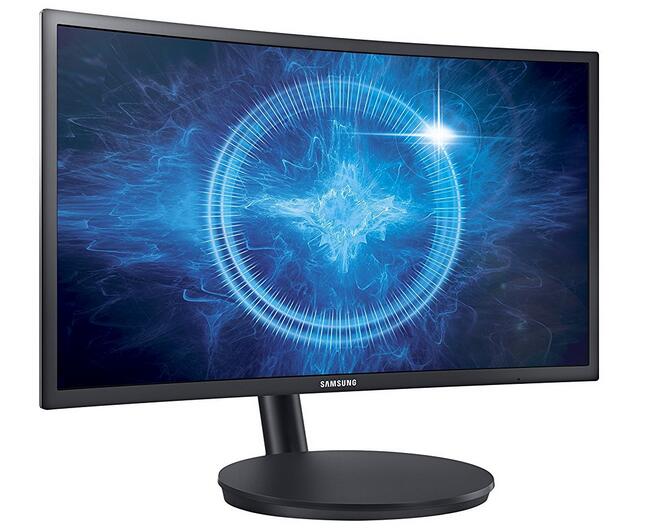

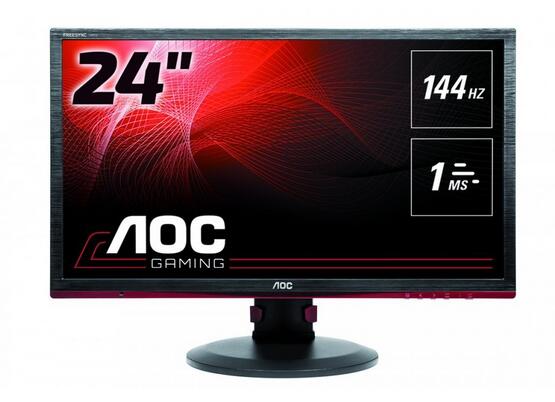
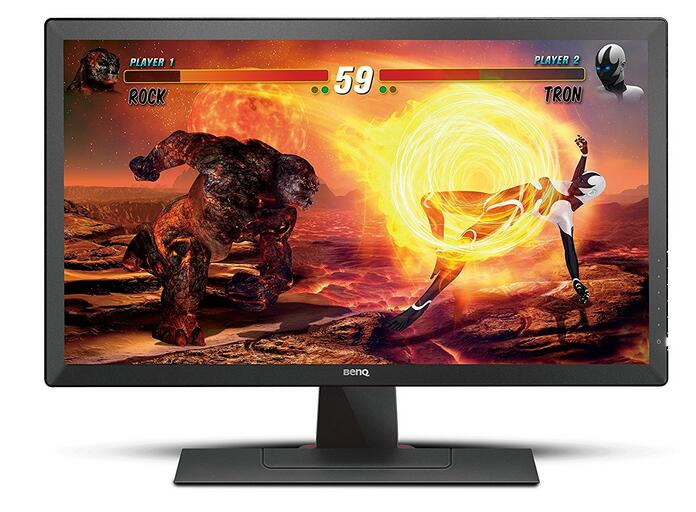
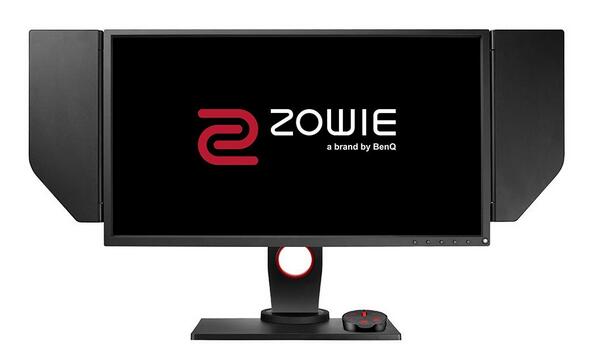
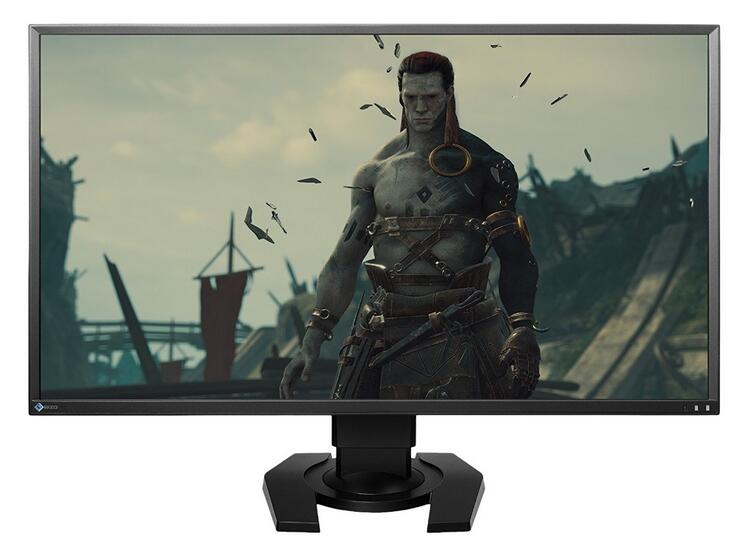
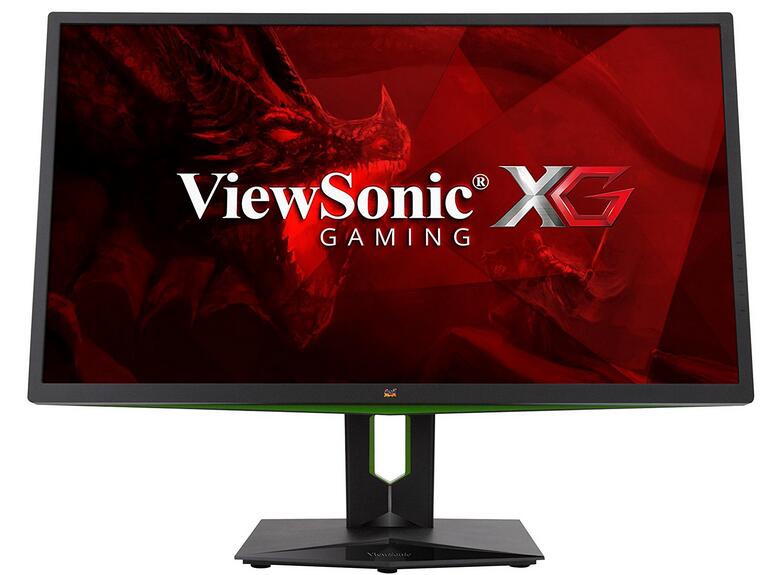
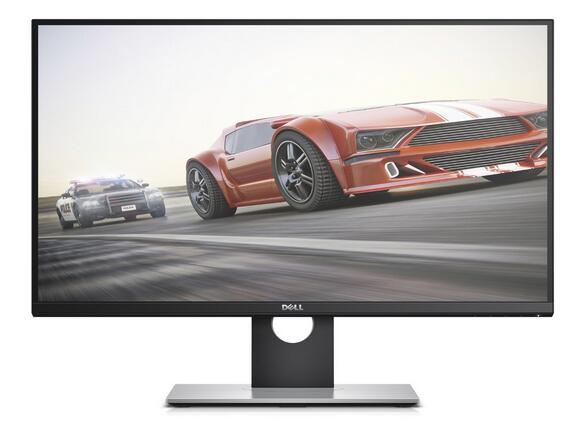
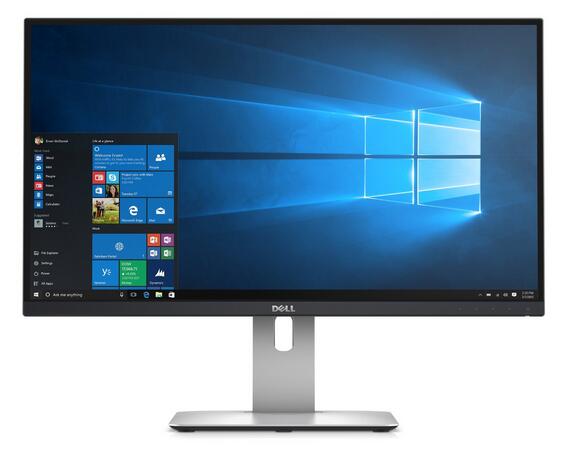
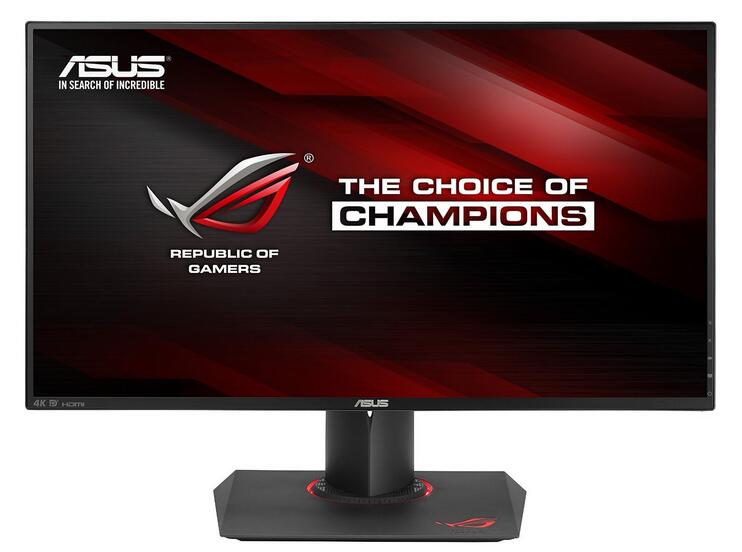
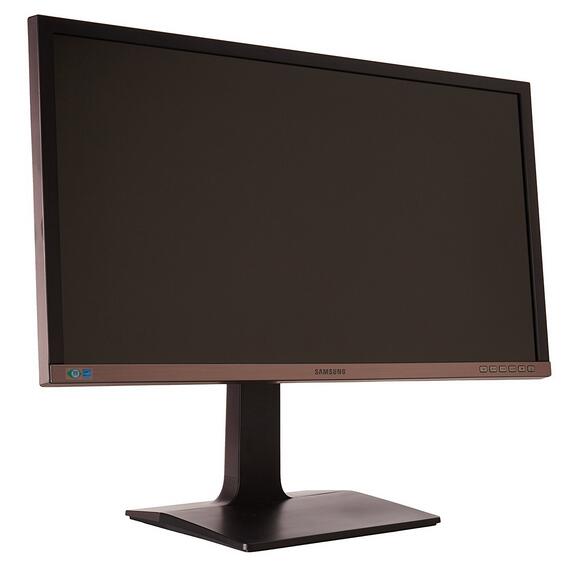
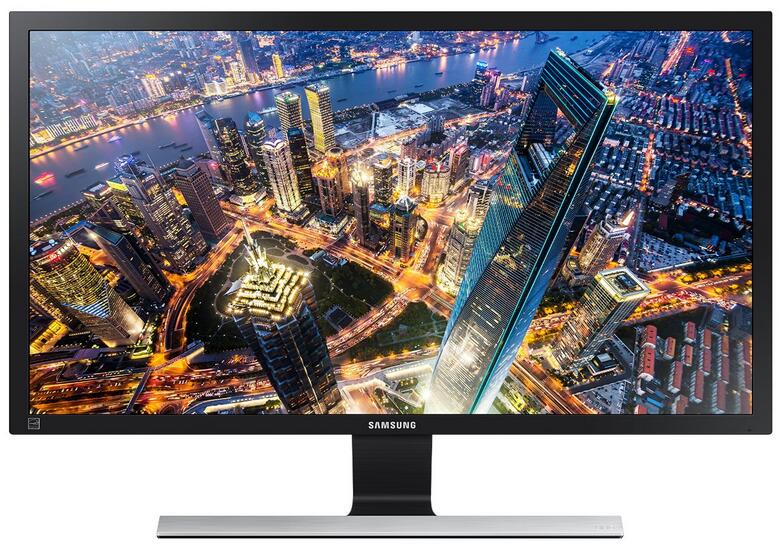
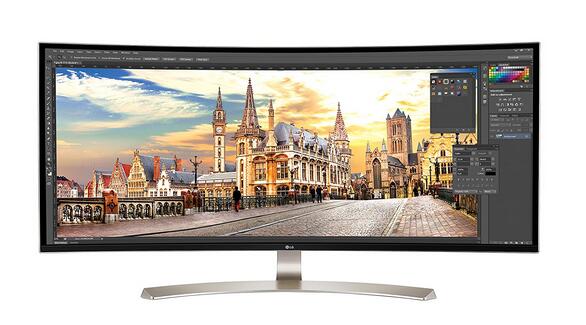
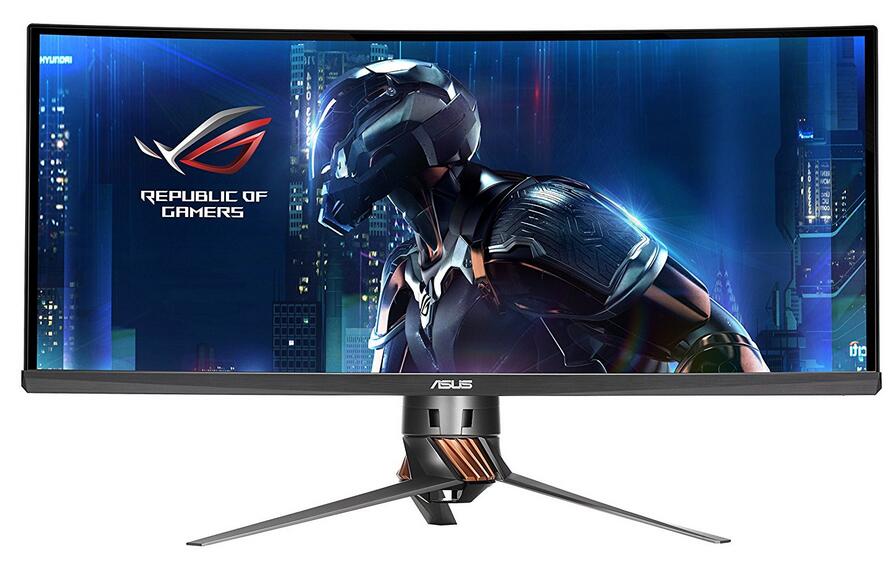
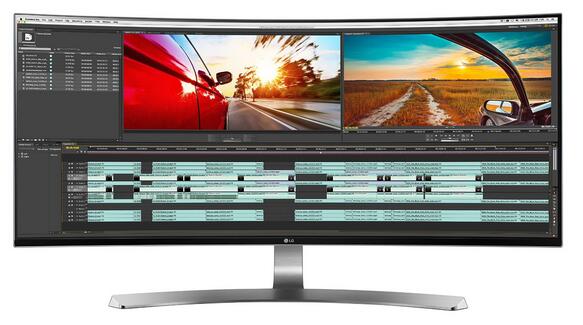
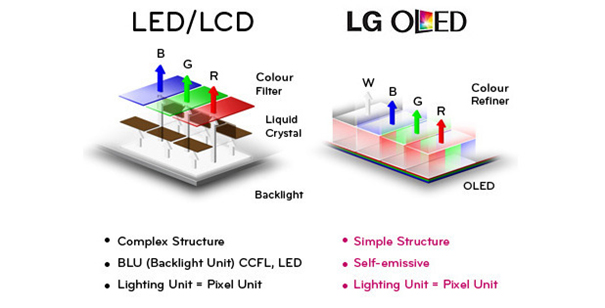
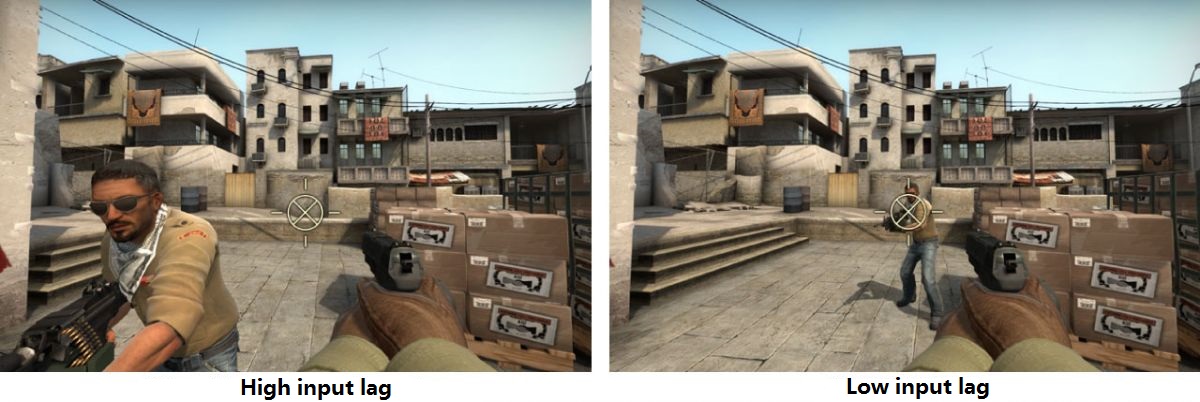
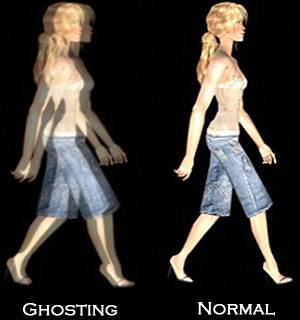
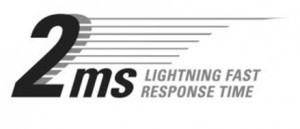
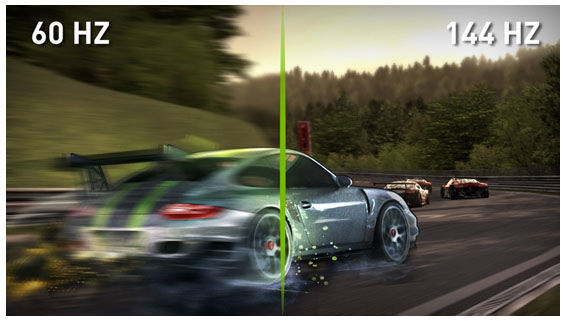
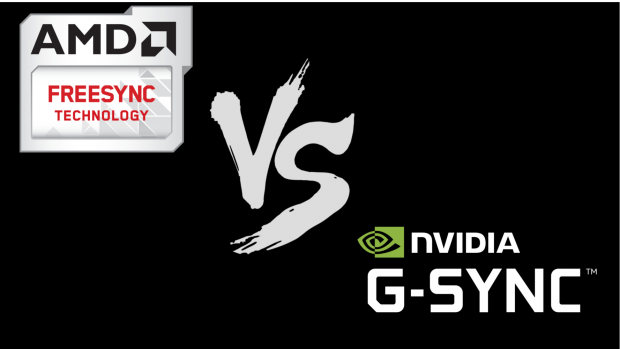
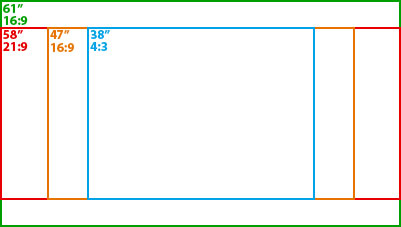

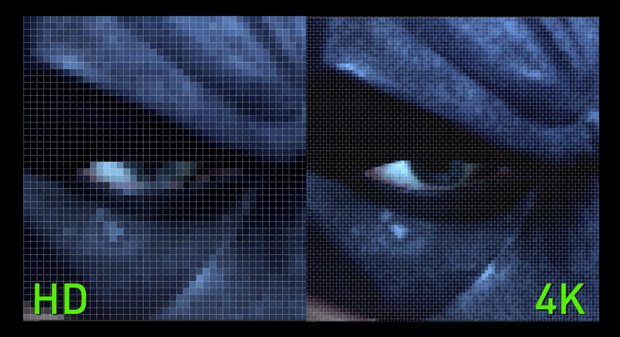
Most of the above monitors is not fully supported by ps4 pro. 1440p image will get downlacaled and you HDMI 2.0 connectivity for
Hey PC4U
I am looking for a monitor solely for playing halo on xbox one console.
I want a minimum 1080p, 24” screen with tilt, swivel, height adjust with the LOWEST input lag and response time combo available. Speed is my #1 criteria.
Right now I have an asus vg248qe and would like to see if there is a faster monitor available.
Please let me know if you know what that is or a few to look at – cost no object.
Thanks!
Justin
I wish we could sort all the ones that are 3D Vision ready, it’s 3D or nothing for me.
You have LG 24GM77 listed as a 27 inch monitor, it is in fact a 24 inch monitor.
Sorry, it’s my careless. I have corrected it. 🙂
Informative but why do you only have 8 afaptive-sync/free-sync Monitors in there. There are more then 3x Times as many adaptive-sync Monitors then g-sync avaiable. Since Intel Plans to implement the adaptive-sync Feature in the next Generation too it would be interesting to compare more of these Monitors.